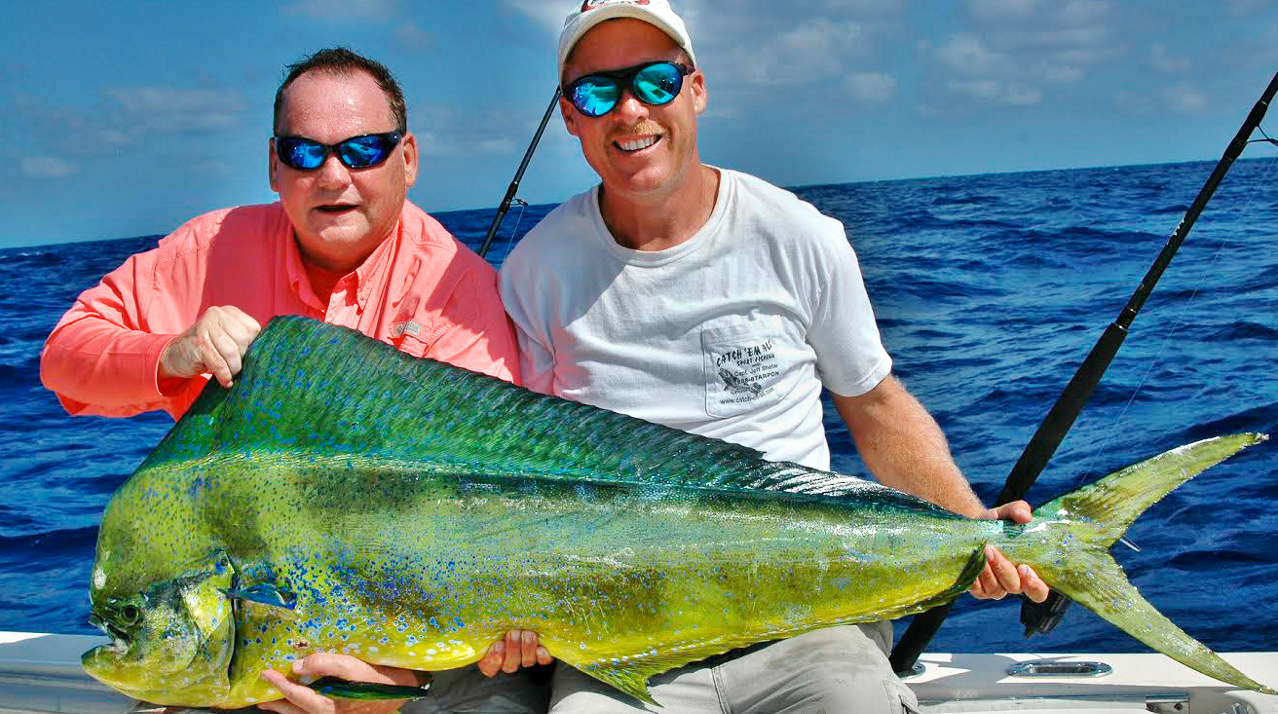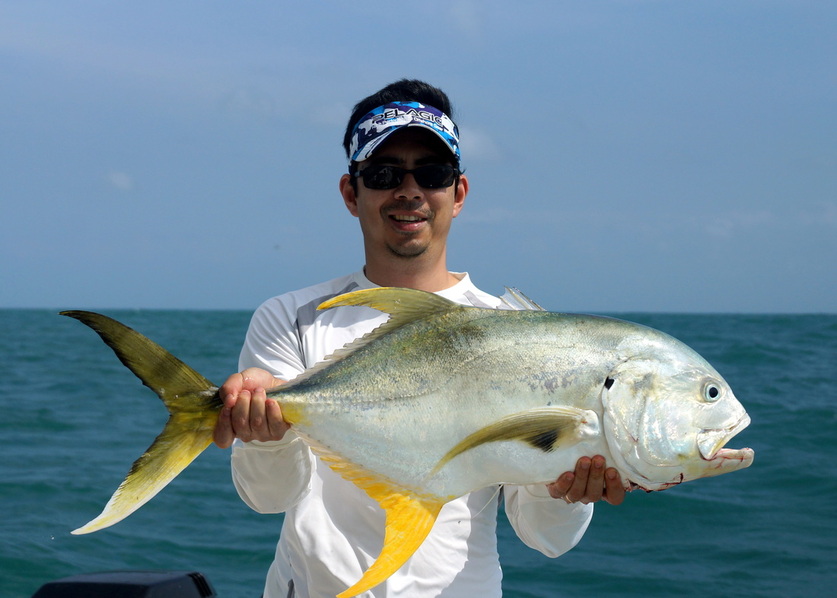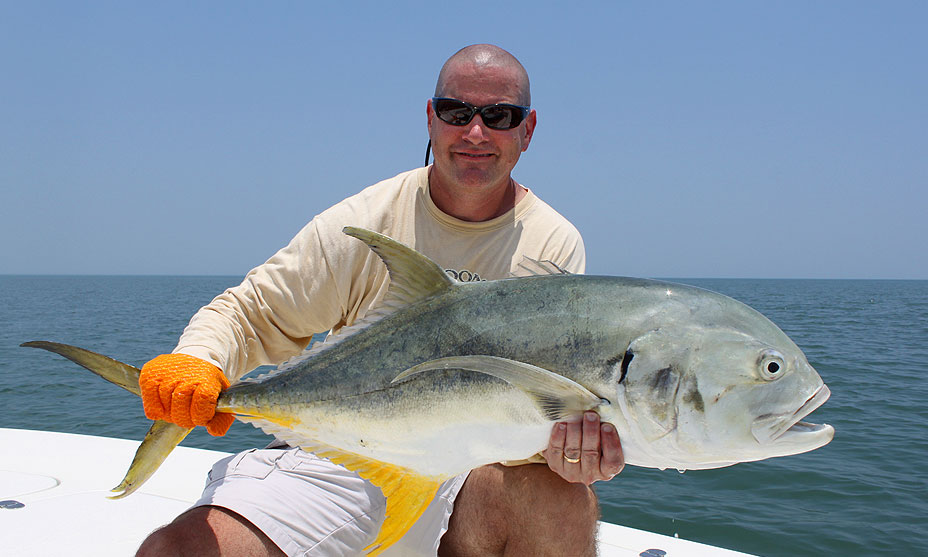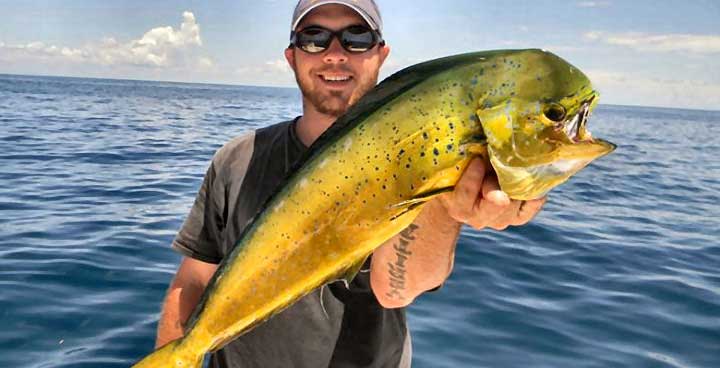Fishing Articles
Florida Style Fishing
On a bright moonless night. The rods were out around the 36Command Bridge Carver yacht. We were enjoying a cocktail and a beautiful moon after a difficult week. Listening to the clickers as the waves picked us up and put us back down.

The drags were loose, clickers on. All of the rods sounded alike. Except one of the rods was going a bit faster. It was like a shark bite, steady and slow. I put the drag lever in the strike position and waited. Within a few seconds the rod tip bent over. I reeled hard and fast and then the rod doubled over but this fish didn’t take any strain. I believed the fish did not know there was a hook set in him. I tried to crank some more but the spool stood still with the rod bent over. Within a split second we got a Hugh reaction. The drag started slipping like we hooked on to a locomotive and would not stop. It seemed to go on forever as the line quickly disappeared, I was afraid we were going to get spooled.
We were fishing in about 1,300 feet of water and we had about that much line out. With less than half the line left the drag started slowing down. I cranked the best i could and keep that rod tip bent at all times keeping consistent pressure on the fish. We were able to get about 3 quarters of the spool back when our fish decided to make another run. This fish took what he wanted, when he wanted. Staying focused is crucial during this fight, because pressure has to be kept on this fish 100 % of the time. Three of us took turns to crank this fish in, none of us could only last more than 15 minutes each. After three hours later I stuck a large flying gaff into a Broadbill Swordfish estimated over 300 lbs.
Fishing line
800 yards of 50 pound test should get most jobs done. Use braided lines which have a smaller diameter than monofilament does and have double the strength. We use 200 lb. braided Tuff line which has a diameter of 50 lb. test mono, therefore we can spool over 1000 yards on to a Penn 80TW. This might sound overkill but I like to fish all my rods ready for that 400 pounder.
Reels
50 weight reels such as Finore, Penn, and Shimano’s 2-speed are the preferred minimum. If you size down you take a risk of getting spooled or the drag might not hold up against the pressure. It can be done but it takes good skill.
Rods
50 -80 pound class is an awesome rod. A bent butt rod is my choice for handling a big fish. Extra-large Aftco roller guides are some of the best guides to have and play an important role when line strips off the reel. They help to keep your wind-ons from getting damaged.
Leaders
To start, wind-on leaders should be used and can be purchased at most offshore tackle shops. They help when your fish comes close to the boat and does not want to cooperate. The extra length of heavy mono will safeguard your line when it chafes on the bottom of your boat or goes around the props.

A 40 turn Bimini needs to be tied to the end of your main line, then connect the loop that is on your wind-on to the loop on your Bimini by taking your wind-on loop and insert it through your Bimini. Then take the tag end of your wind-on leader and pass it through the wind-on loop 2 times, then pull tight. Next you need to connect a 300 lb. strength ball-bearing swivel or better to the end of the wind-on using a crimp that matches your line strength. I use 300 pound leaders with the crimps to match and also chaffing gear to reduce any wear and tear to the leader connections. Now you need to connect 8-10 feet of the same strength leader to the other end of the ball-bearing swivel. Don’t forget the chaffing gear.
Hooks
You are near the final stages. Size 10/0 Mustad hooks are the average and are worthy. The following are 2 single hook rigs: The first one is easy and used for live bait. Just crimp your hook, (use chaffing gear) to the end of the leader. Keep your loops small as you crimp the hook, but big enough so that the hook swings freely. Live baits should be bridled through the eye sockets and not through the eyeballs. I use 50 pound strength wax line with an open eye needle for bridling. Then I insert the hook upwards under the bridle.
The 2nd rig is a squid rig. It is almost like the first except you use 2 crimps. Pass the first crimp through the tag end so it slides freely then crimp your 2nd one the same way as the live bait rig, only this time leave about 2 inches of the tag end pass through the crimp. Next take your medium to large squid and insert the hook about ¾ of an inch down from the top of the mantle and pull through past your crimp and extra tag line. Then take your free moving crimp and bring it down and insert that extra tag line into the crimp, but do not crimp down on it. This will hold up your squid as if on a coat hanger. Then you will need to re-insert the hook back through the squid making sure the squid hangs straight when all is finished.

Next take your bridling needle and floss and sow the squids head and tentacle section to the mantle piece. This section is delicate on the squid and might even pull off. Making sure everything looks normal to the fish is important. Using the needle and thread will make the squid stay intact on the strike.
Accessories
As you prepare to deploy your lines you will need a supply of 12-32 oz weights, light sticks, balloons and rubber bands. The first line to be set out will be the furthest from the boat and also the deepest, 250-350 feet deep. First things first, crack your light stick or twist your Electralume and attach it to your leader with a wax line loop tied on your line anywhere from 10-40 feet away from the bait. Then rig your bait as we did earlier. Throw your bait overboard and go at least 20-50 feet behind the bait to attach your weight by using another wax line loop. Make this connection tight so the weight does not slide around the line. The heavier the weight the faster your bait pulls through the water. Heavier weights for dead baits like Squid, Bonita and small Mackerel and lighter weights for live bait like Blue Runners, goggle eyes, Tinkers etc.
Set your first jug or balloon far from the boat, at least 200 feet away with a cylume attached for a good visual. You’re ready for rod # 2. This rod will go 2-250 feet down, then attach your balloon or jug and set this line in between the boat and the furthest balloon. Space the balloons about 100 feet apart. Your next rod will go down 150-200 feet. To avoid all the counting, I will pre-measure my lines at home and mark them by tying half hitches with wax line. This way when you deploy your lines, just let out the line slowly until you reach your marker. This last rod does not need a balloon, it is fished right below the boat. If you use more rods you need to set your first balloon further from the boat, and perhaps a 2nd rod at the boat, one on the bow, one on the stern.
It is a good idea to get an under water light that can be kept right under the transom. This light will attract fish, and you can see passing Turtles, Dolphin and other baits come right into the light looking for something to eat and sometimes even a Swordfish will swim through.
Prior to all the rigging, the most important part is to set your drags. With 50 pound line, 8-10 pounds of drag is sufficient at the strike drag position. With heavier lines, 12 pounds of drag is more than enough. The lower jaw on the Swordfish is very soft and if a hook gets lodged in that section it will pull when under enough pressure. If the hook gets lodged in the upper section you can use more drag, but you never know where he’s hooked so stay light on the drag and bring that fish to the boat. Shimano’s drag scales are a great tool for measuring your drags.
Your final step is to tune your drag levers after you deploy each line. Some Captains prefer to keep their drag lever in the strike position I prefer to keep them loose with the clickers on, just enough so you don’t hear the line pay out when the waves lift the boat up and down.
You are now Sword fishing!
Remember there is a size limit of 47 inches from the tip of the lower jaw to the fork of the tail. There is nothing wrong with releasing fish bigger than 47 inches either. Sinking a gaff into a fish near 200 pounds or better is a much better accomplishment.


